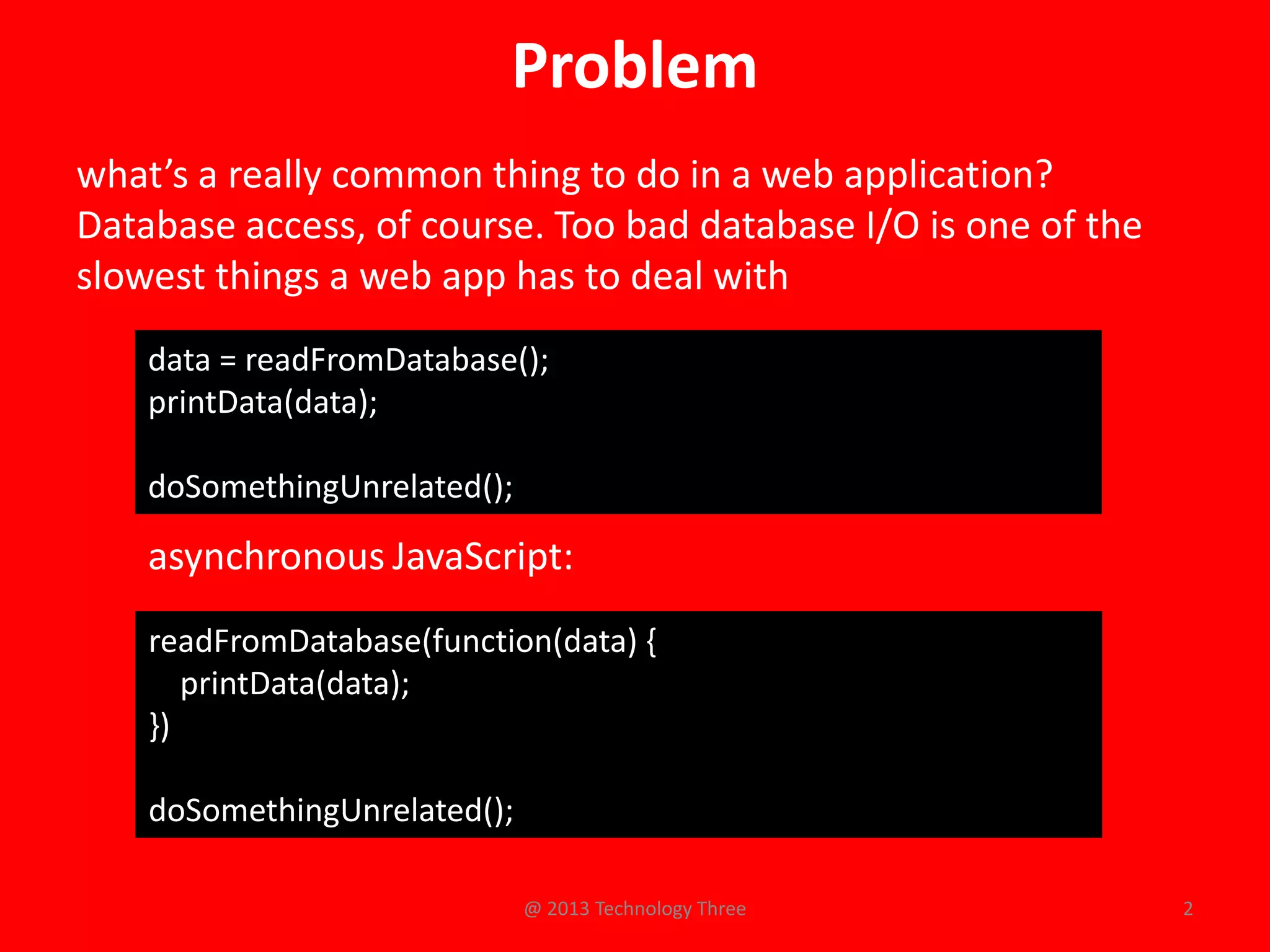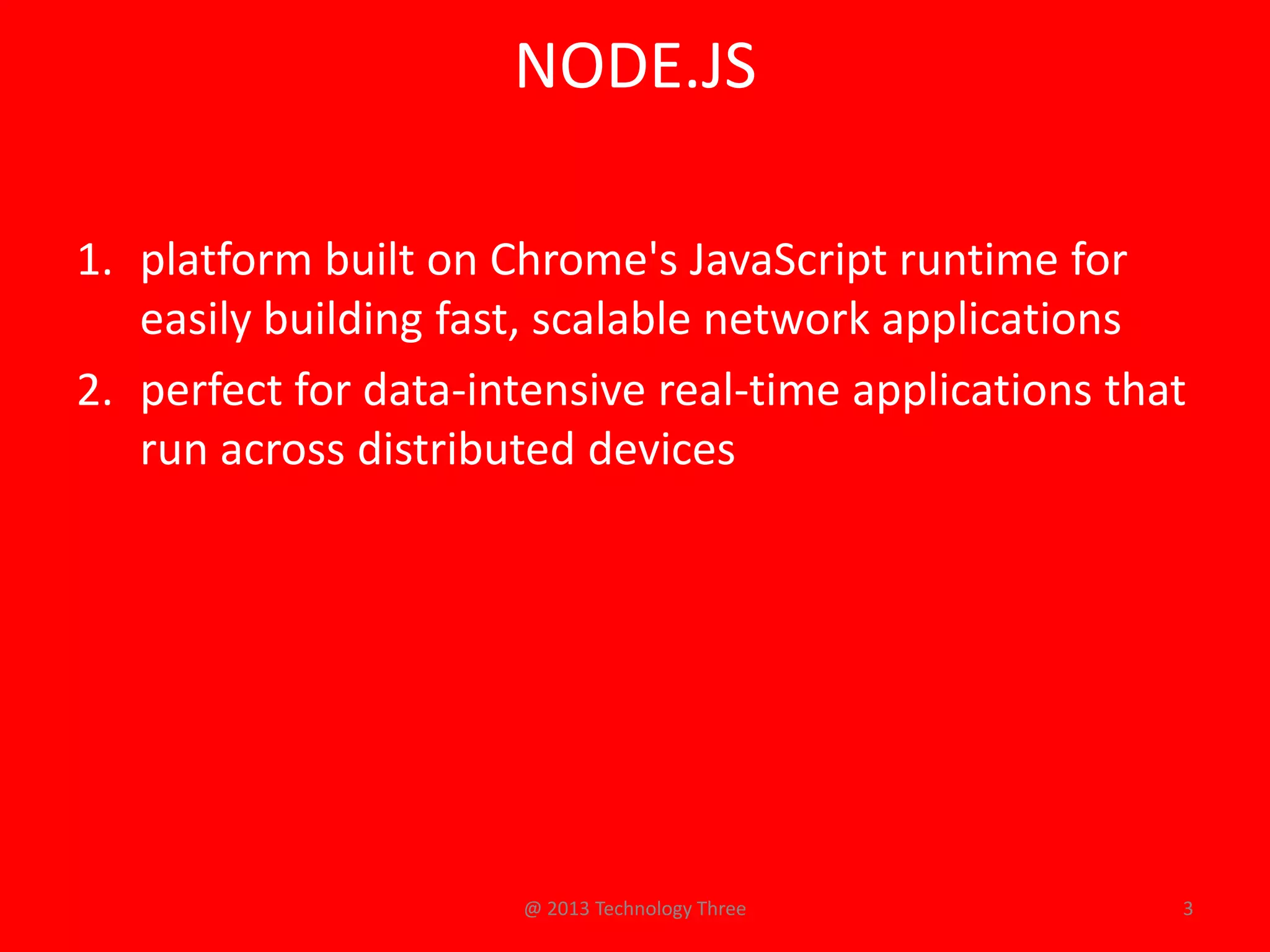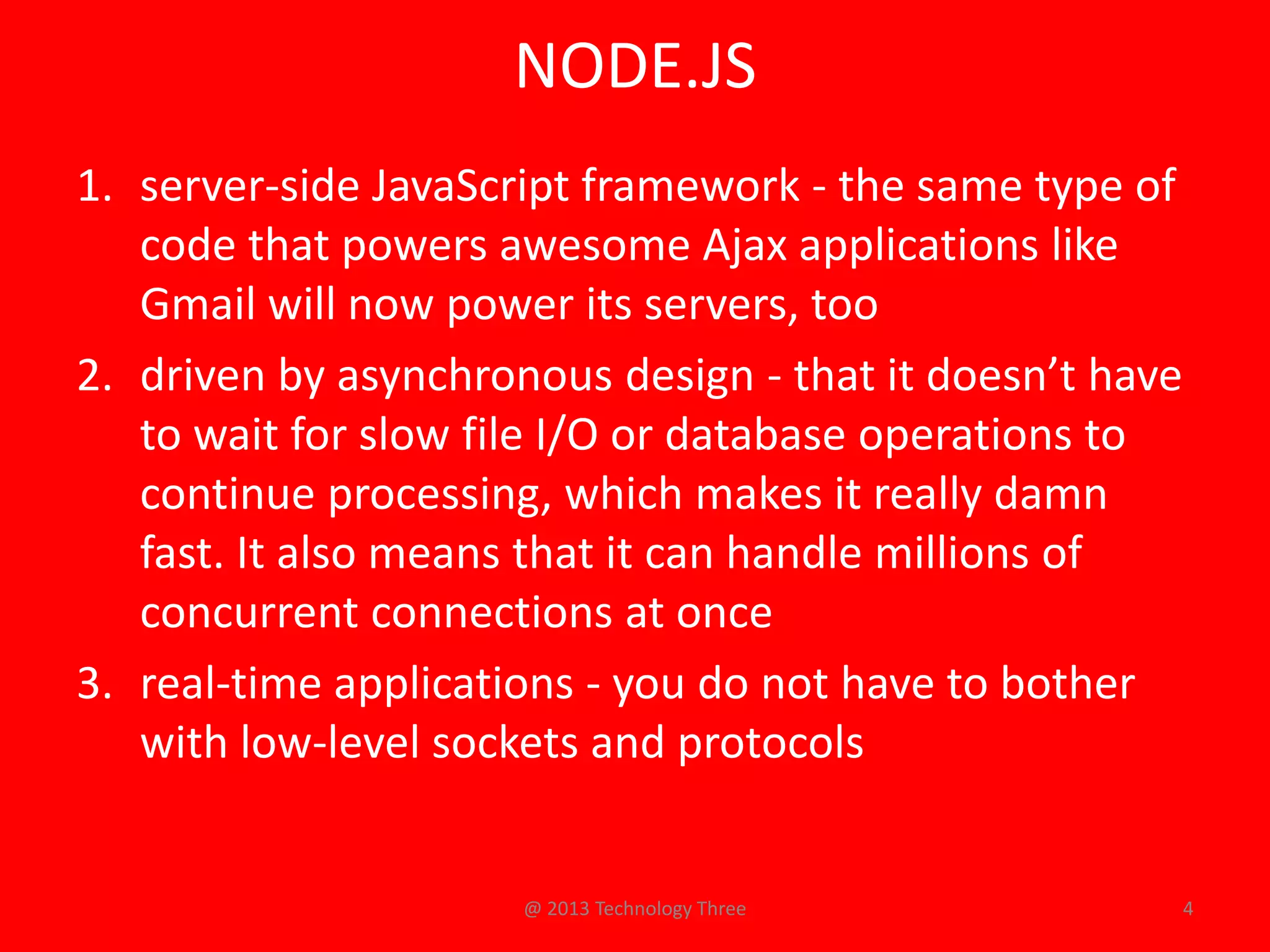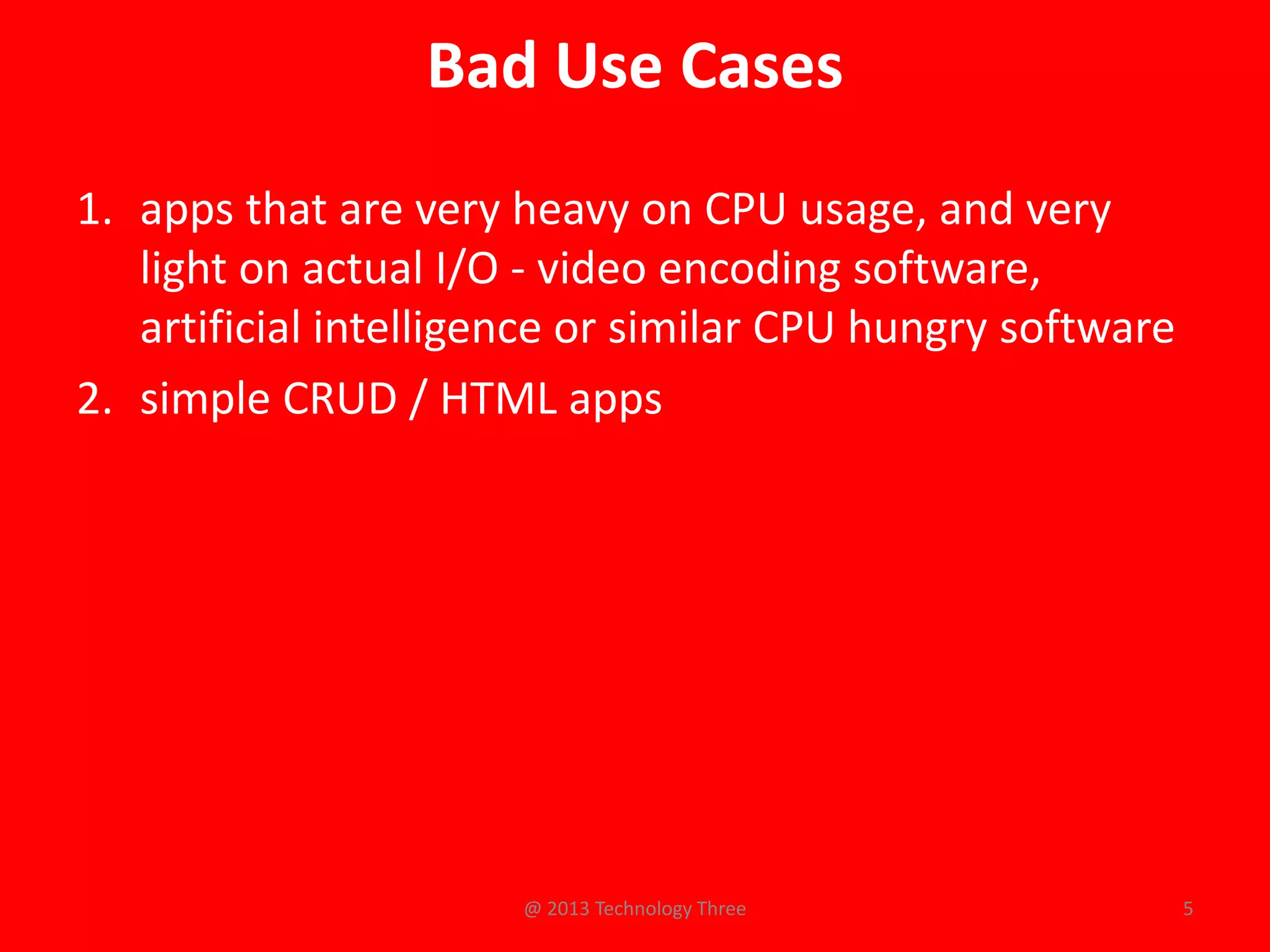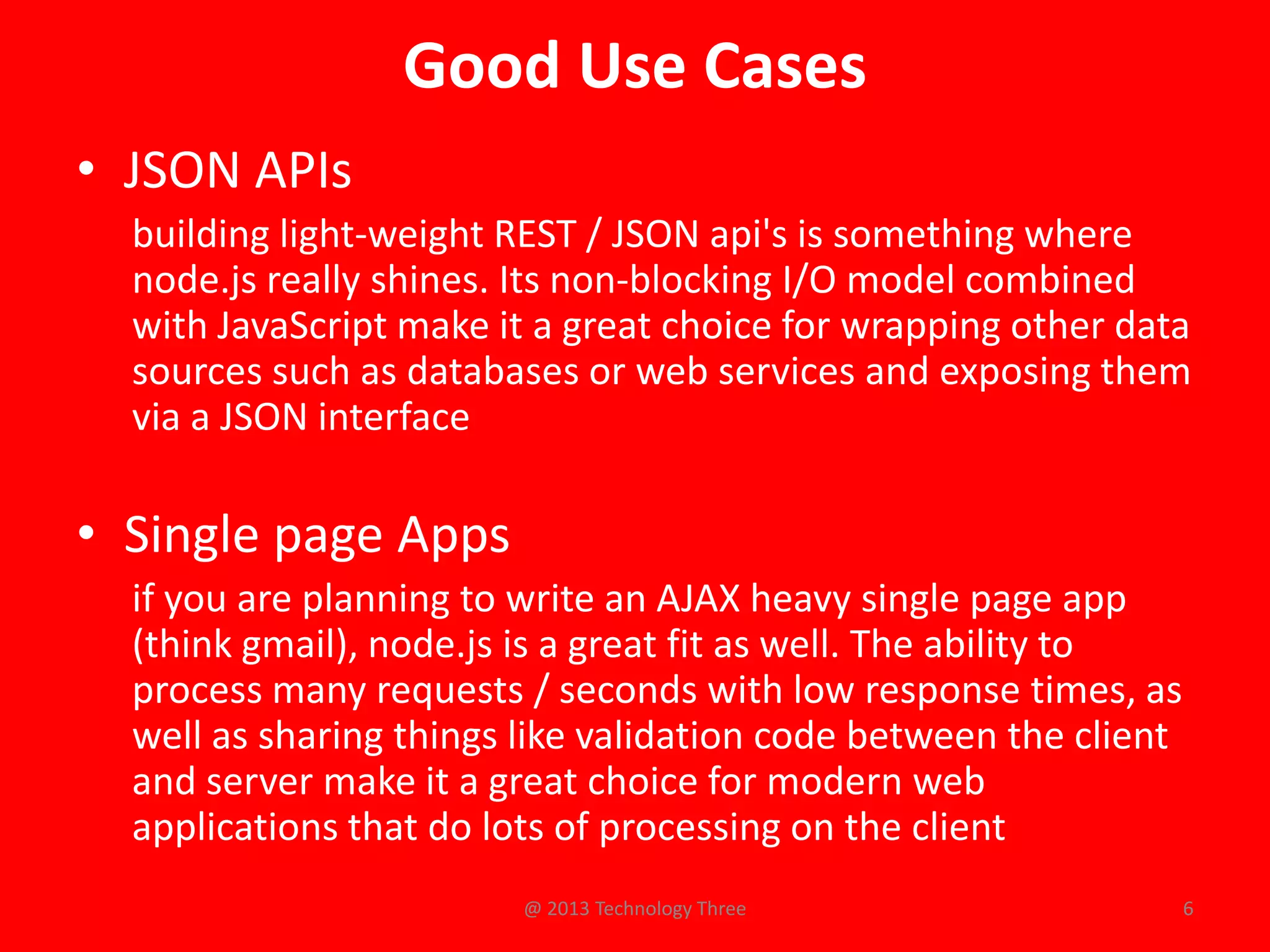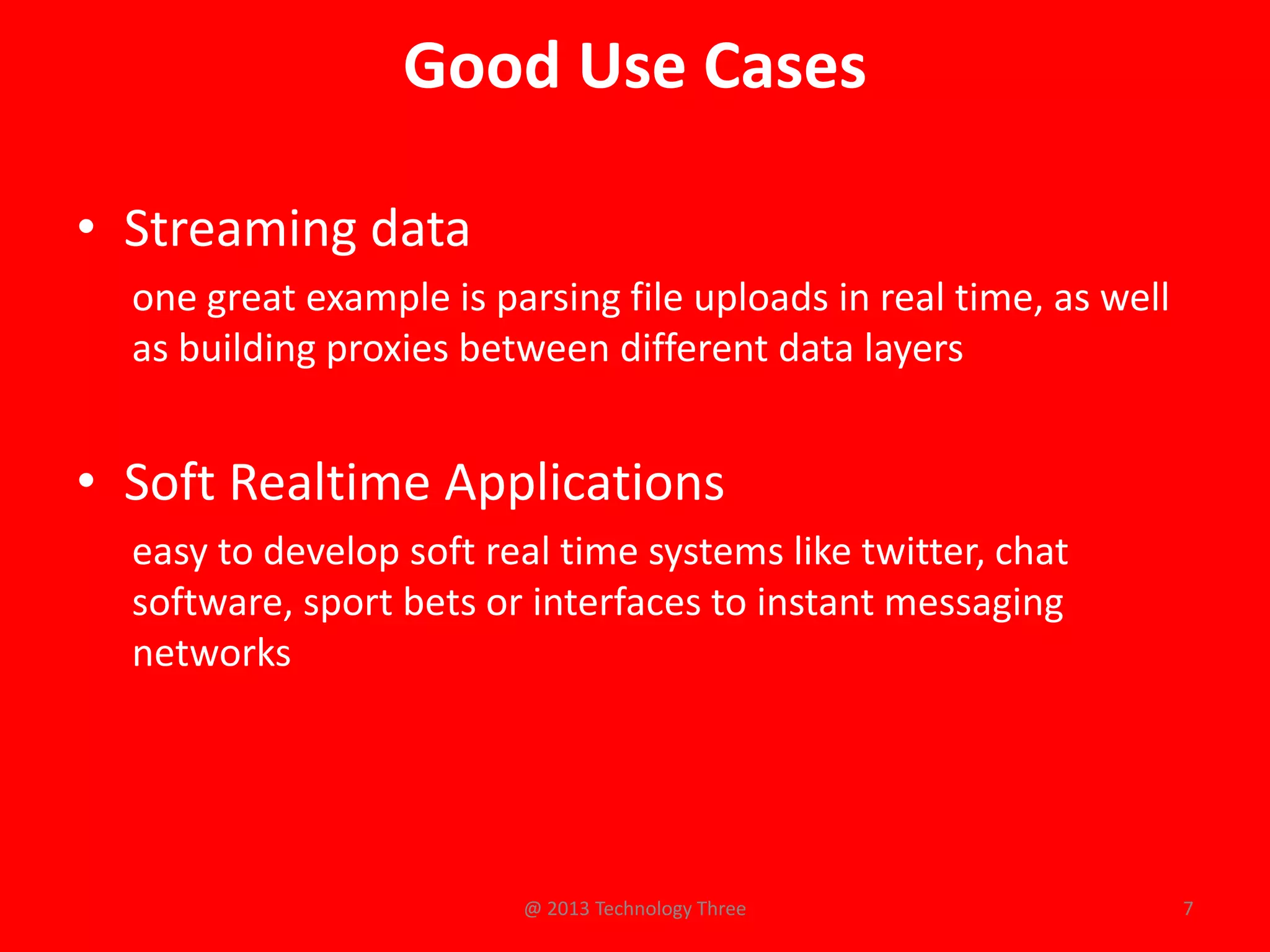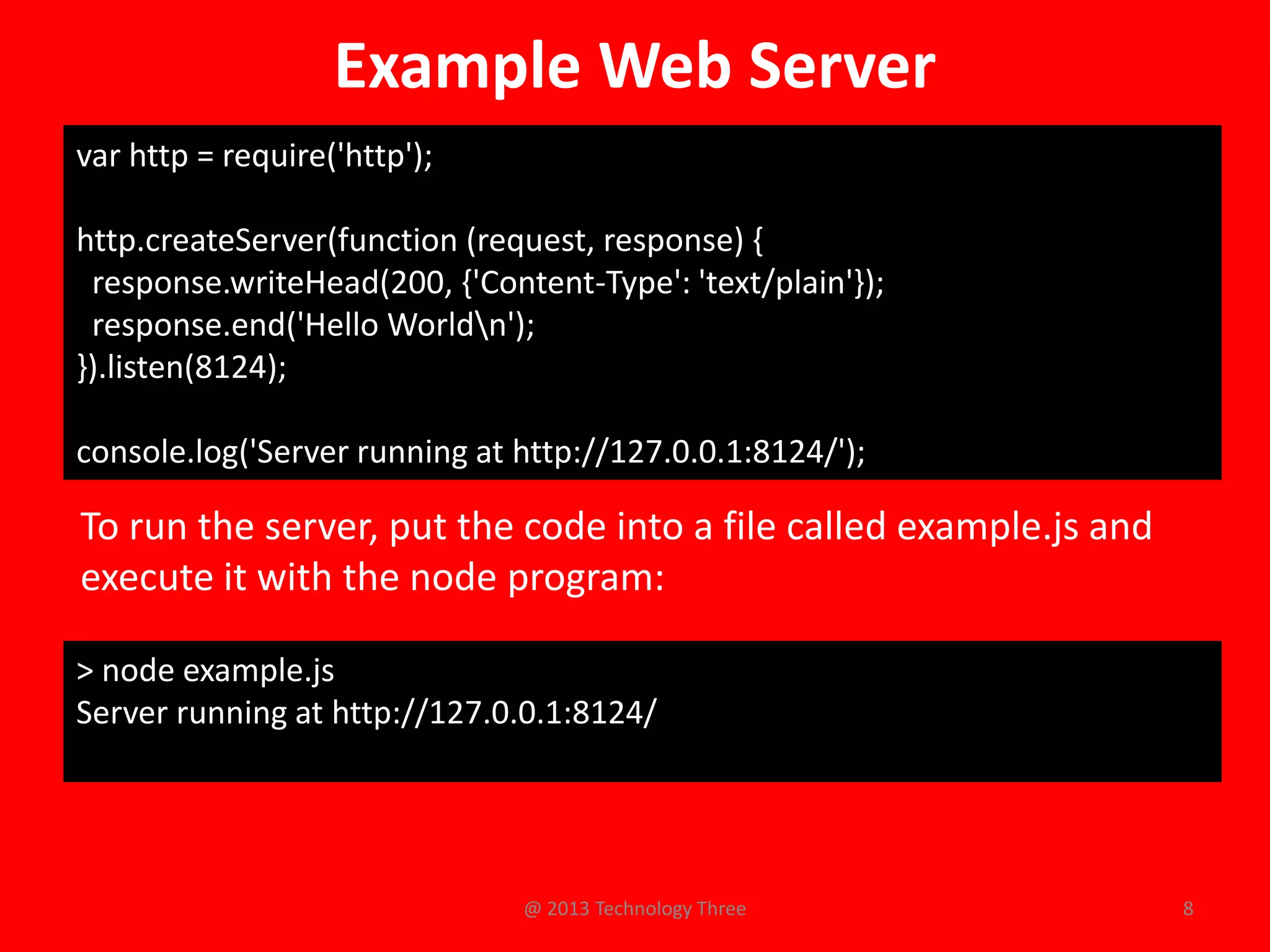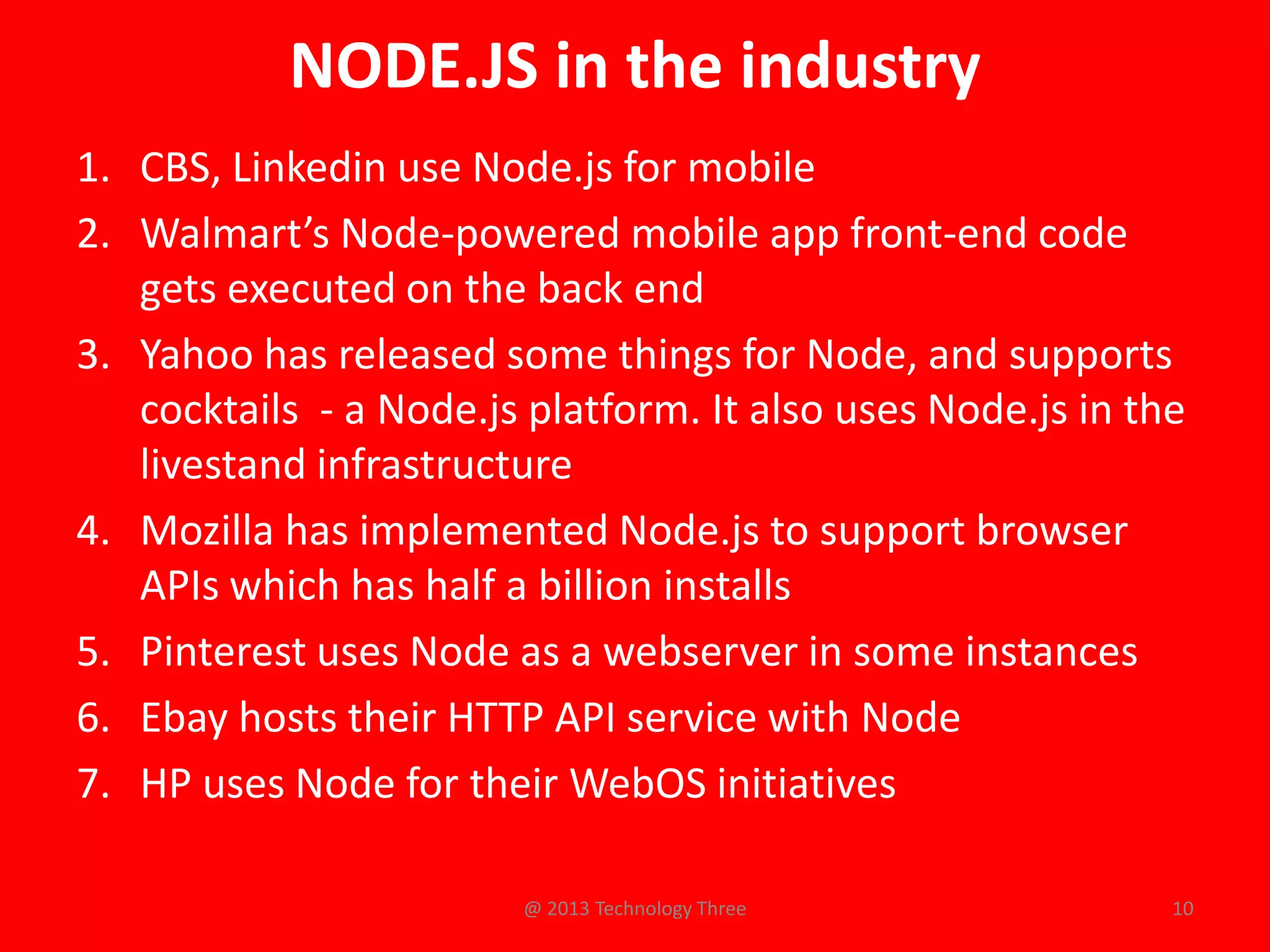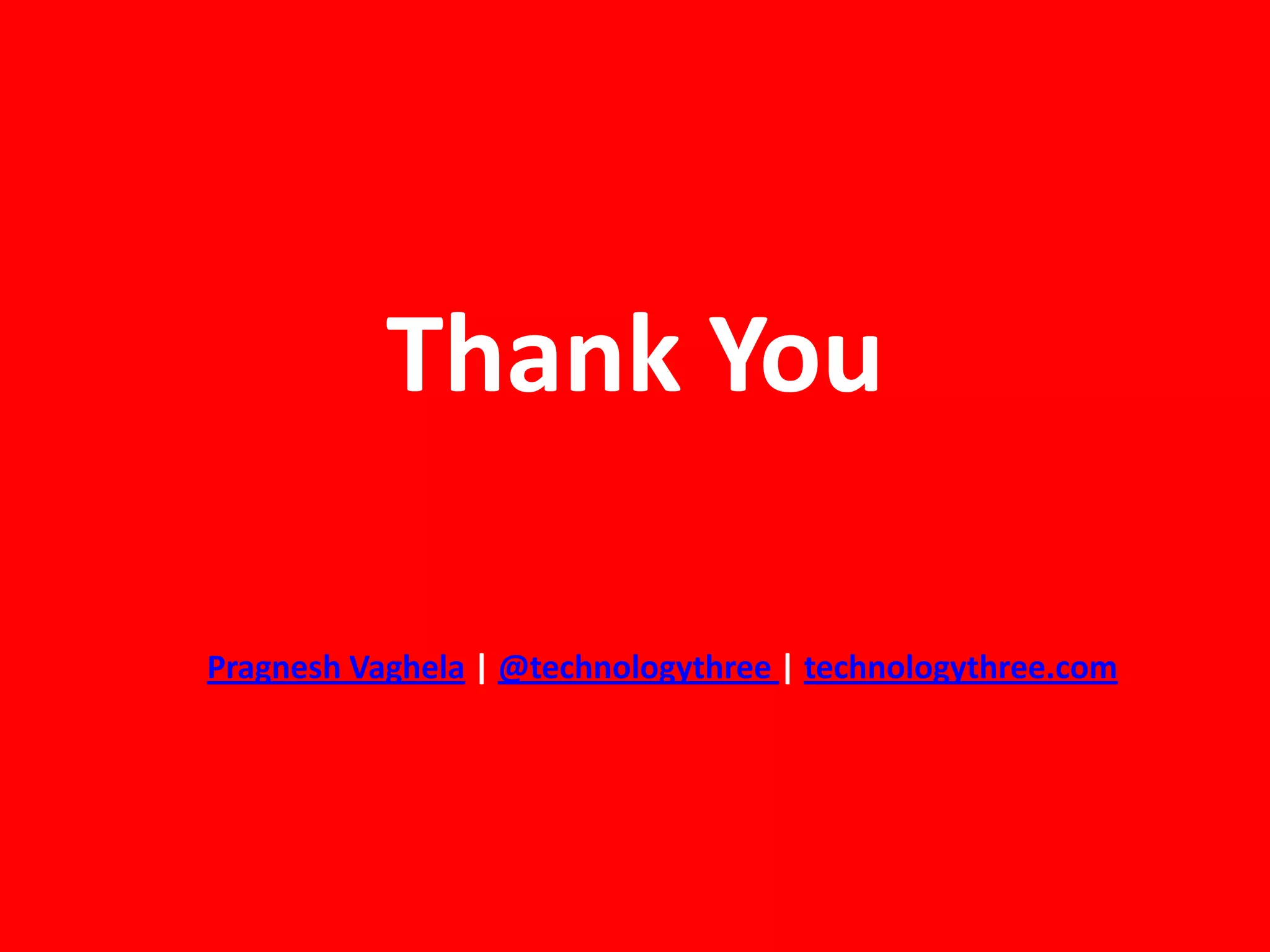Node.js is a JavaScript runtime built on Chrome's V8 engine that allows for easily building fast and scalable network applications. It is well-suited for data-intensive real-time applications that run across distributed devices due to its asynchronous and event-driven nature, which means it can handle many concurrent connections efficiently. Some good use cases include building JSON APIs, single page applications, and streaming data applications. Several large companies like LinkedIn, Yahoo, and Walmart use Node.js for applications that require processing many requests per second with low latency.

